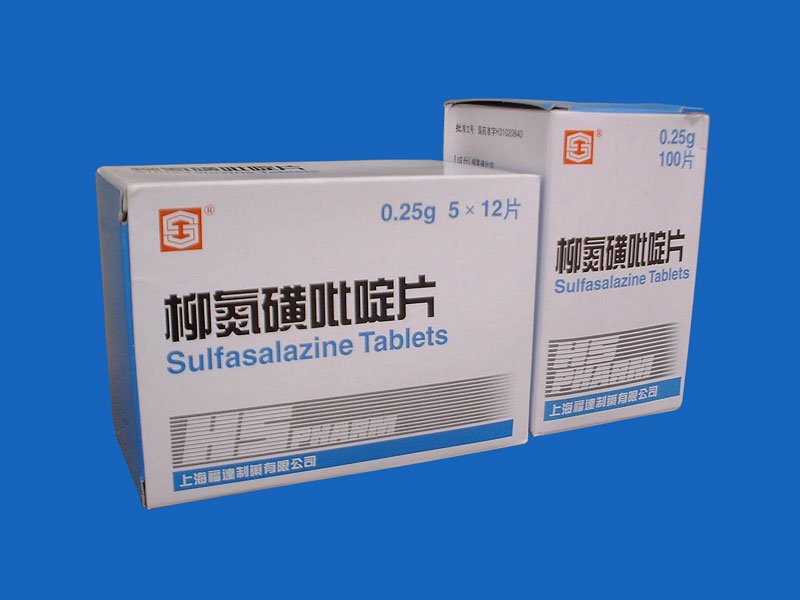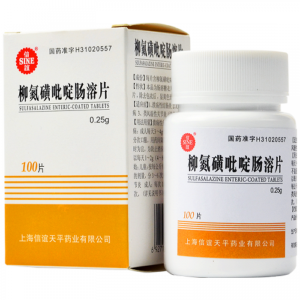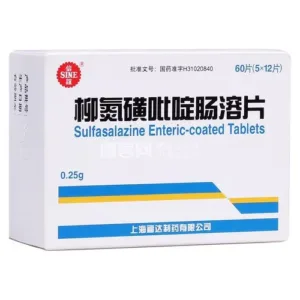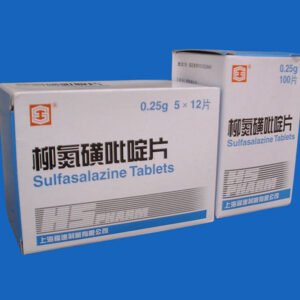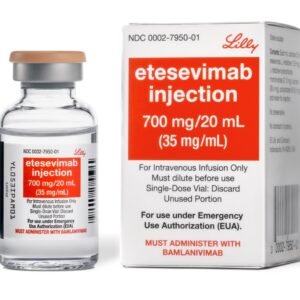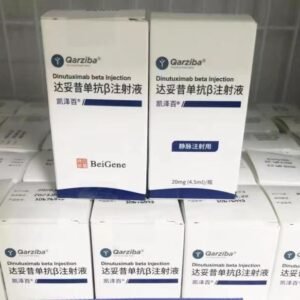Sulfasalazine
Function:
It is mainly used for inflammatory bowel diseases, namely acute and chronic ulcerative colitis and Crohn’s disease, and can prevent the recurrence of ulcerative colitis. Preventing infection after intestinal surgery. For the treatment of rheumatoid arthritis and ankylosing spondylitis.
Dosage:
The initial dose is 2-3g per day, divided into 3-4 times. Do not chew when swallowing. When there is no response, gradually increase the dose to 4-6g per day. After the symptoms are relieved, gradually reduce the dose to 1.5-2g per day until the symptoms disappear. The total course of treatment can last up to 1 year. The initial dose for children over 2 years old is 10-15 mg/kg, and the maintenance dose is 7.5-10 mg/kg, 4 times a day. Rectal administration: Severe patients should take 1 anal suppository each after defecation in the morning, noon and evening every day; patients with moderate or mild symptoms should take 1 anal suppository each after defecation in the morning and evening. After the symptoms are significantly improved, take 1 anal suppository every night or every other night. After inserting the suppository into the anus, lie on your side for 0.5 hours. For enema, grind 2g of sulfasalazine into powder, add 3g of white powder, 1 tube of tin powder, appropriate amount of hydrocortisone and procaine, mix with 100-200ml of warm water and make a retention enema, 1-2 times a day.
Adverse reactions:
Fever and rash may occur, and in severe cases, skin necrosis (Lyell syndrome) may occur. Respiratory system Adverse reactions to the respiratory system are rare. Fibrous alveolitis has been reported, but should be distinguished from ulcerative colitis symptoms such as fever, dyspnea, eosinophilia, and pulmonary infiltrates. Such adverse reactions generally appear within 1-6 months after taking the drug and can recover after stopping the drug, but there are also reports of death. For such patients, azosalicylic acid can be used instead. The most noteworthy adverse reaction of sulfasalazine in the blood system is the inhibition of the hematopoietic system. Thrombocytopenia (severe cases can cause bleeding tendencies) and leukopenia (severe cases can cause infection) can occur; sulfasalazine can also reduce folic acid absorption, causing megaloblastic anemia; for lack of glucose 6-phosphate detoxification Patients with hydrogenase have a severe tendency of blood cell lysis; there are also reports of death due to damage to the hematopoietic system. Nausea, vomiting, and abdominal discomfort are common in the digestive system. Sore throat and dysphagia may also occur. Rarely, pancreatitis, toxic hepatitis, and colitis may be aggravated. For patients with slow acetyl metabolism, the incidence of digestive system adverse reactions is higher. Reproductive system: Sulfasalazine can cause a decrease in male sperm count, decreased motility, and an increased proportion of malformations, leading to decreased fertility or infertility. Psychiatric and nervous system: For some patients with abnormal allergies, taking sulfasalazine may cause psychiatric and neurological symptoms. Severe depression has been reported. Urinary system: The sulfapyridine contained in sulfasalazine can cause dysuria, crystalluria and hematuria after absorption. Resistance: Studies have found that sulfasalazine can induce bacterial resistance. Others: Rare goiter.
Drug contraindications:
If you are allergic to this product, it is contraindicated during pregnancy. It is contraindicated during lactation. It is contraindicated in children with liver and kidney dysfunction. It is contraindicated in children. Use with caution if you have liver function impairment. Use with caution if you have renal function impairment.
Share:
Products
Our offers
Health Classification
Let us work together to protect precious health



